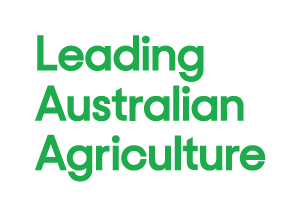Agricultural interest rates have remained on hold for the third consecutive month, mirroring the Reserve Bank of Australia’s decision to leave rates on hold, the National Farmers’ Federation (NFF) April Agribusiness Loan Monitor shows.
Yet while official interest rates are at near record lows, the cost of accessing finance, combined with a range of other pressures, including the high Australian dollar, increasing input costs, softening commodity prices and a return to dry conditions across many states and territories is putting undue pressure on Australian farmers, says NFF President Duncan Fraser.
“On Monday, exactly one year after the Federal Minister for Agriculture declared that Australia was drought free for the first time in a decade, the QLD Government announced that 13 local government areas – an area equivalent to more than a third of the state – are now in drought,” Mr Fraser said.
“QLD is not alone: a large proportion of SA is severely rainfall deficient, along with areas in VIC, WA, the NT, NSW and even parts of TAS. The slow encroachment of dry seasons is being felt hard by many farmers, some of whom have not yet fully recovered from the last drought.
“In many areas, farmers are shouldering a double burden: a lack of rainfall combined with a fall in property values that is leading to challenges in accessing the capital required to plant a winter crop.
“This week, we have heard reports of many farm businesses going into receivership or in financial distress due to high costs, reduced income and the reduction in land values. And just yesterday the latest Rabobank Rural Confidence Survey showed a reduction in farmer confidence, with more than a third of the nation’s farmers expecting the economy to worsen over the coming year.
“While we’ve been welcoming of the Federal Government’s Farm Finance package for the support it shows to Australian farmers, we want to see long-term strategic policy decisions from Government, not rushed, ad hoc announcements. We particularly want to see the national drought policy reform finalised. Farmers need – and deserve – that certainty from the Government.
“In the meantime, we encourage all farmers to talk to their financial lenders to make sure they are accessing the best available interest rates,” Mr Fraser said.
The April NFF Agribusiness Loan Monitor shows agri-term loans stand approximately four percent higher than the RBA cash rate, and at around one percent higher than standard variable mortgages.
The full April Loan Monitor is available http://www.nff.org.au/publications.html#cat_2119[here]. The Monitor is compiled each month by leading money market monitor Canstar and published by the NFF as a tool for all Australian farmers.
You may also like
It was our biggest farmer rally; yet 40 years on we’re in the same battle
Opinion by David Jochinke, National Farmers’ Federation President Forty years ago today (July 1), 45,000 farmers packed their station wagons, fixed a few cheese sandwiches and sarsaparillas for the road, and...
NFF and Tonga reaffirm shared commitment to sustainable PALM scheme
The National Farmers’ Federation (NFF) and the Kingdom of Tonga have reaffirmed the importance of the Pacific Australia Labour Mobility (PALM) scheme. The Acting High Commissioner of Tonga, His Excellency Mr...
NFF Lunch and Learn Series discusses a food security strategy
The National Farmers’ Federation (NFF) has launched its new ‘NFF Lunch and Learn’ series with a compelling inaugural session centred on Australia’s food security. Held on 30 June 2025, the first event attracted more...





Add comment